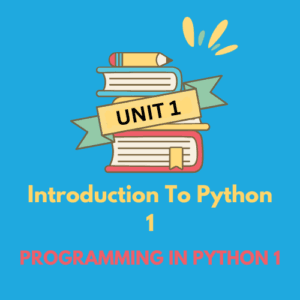
Click On the Download Button Below 
Introduction to Python 1 :-
Python is a versatile and high-level programming language known for its simplicity and readability. Designed by Guido van Rossum and first released in 1991, Python emphasizes code readability and allows developers to express concepts in fewer lines of code compared to other languages. Its syntax is clean and easy to understand, making it a popular choice for beginners and experienced developers alike.
Python supports multiple programming paradigms, including procedural, object-oriented, and functional programming. It is widely used in a variety of fields such as web development, data analysis, artificial intelligence, scientific computing, automation, and more. With a large and active community, Python also has a rich ecosystem of libraries and frameworks, making it highly adaptable to different use cases.
Objectives of Introduction In Python 1 :-
- Understand the fundamentals of writing Python scripts
- Learn core Python scripting elements such as variables, expression,
and operators - Use Python to input and output function
- Understand the Built-in Functions
List of References :-
- a. Charles Dierbach, Introduction to Computer Science using Python,
Wiley, 2013 - b. Paul Gries , Jennifer Campbell, Jason Montojo, Practical Programming:
An Introduction to Computer Science Using Python 3, Pragmatic
Bookshelf, 2/E 201
Summary of Introduction In Python 1 :-
- a. We learnt Reasons for Python as the learner’s first programming language.
- b. We have studied IDLE interpreter (shell) and its documentation.
- c. We learnt syntax of expression evaluation: similarities and differences compared to a Calculator
- d. We used different types of expressions and operators.
- e. We also used Built-in function type & operator precedence in python programs
